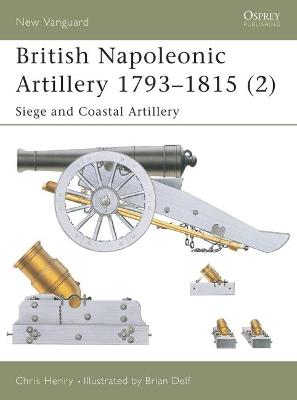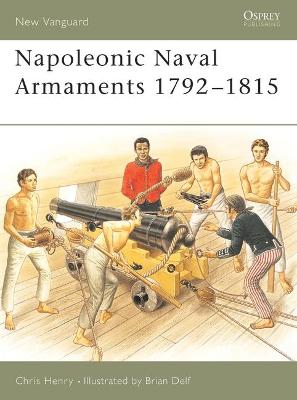New Vanguard
3 primary works
Book 65
Following on from the first volume covering British Napoleonic Artillery, this volume concentrates on the heavy weapons of siege and coastal defences. This book covers the main equipments used; the 24 pounder siege gun and a variety of mortars. Mortars varied from 4 or 5 inch versions up to a 13 inch calibre and were considered to be extremely effective because they used an exploding shell to destroy fortifications or personnel. Also covered in detail is the specialist bomb vessel, which was used to attack fortifications in a similar fashion; siege techniques; and the tactical use of siege and coastal artillery.
Book 90
There were many elements to British Napoleonic naval success but one of the key factors was gunnery. Other countries developed different naval weapons to fit their maritime strategy. The French and Spanish systems developed on similar lines, while those of the Baltic navies tended to rely on smaller craft and weapons. Holland, during this period, was part of the French sphere of influence and this had an effect on the development of naval weapons. This title describes the systems of all these countries as well as the fledgling navy of America, detailing the gunnery skills that embarrassed the Royal Navy at the height of their dominance.
Book 98
The rapid development of the tank as an offensive weapon following its introduction in World War I gave artillery theorists cause for concern during the 1920s and 1930s. By the beginning of World War II anti-tank guns had been developed, initially at around 37mm and 2 pounds in weight of shot. By the end of the war, monster anti-tank weapons were being developed, able to penetrate an armour thickness of up to 200mm at a range of 1,000 yards. This book explores the British efforts to keep up in a war of development, which saw heavier and more powerful guns eventually replaced by experimental ideas in an attempt to stop the German onslaught.


